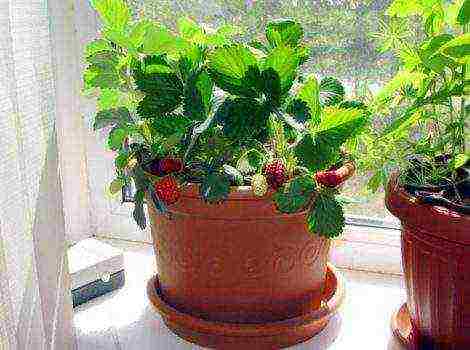Content
- 1 Dill
- 2 Parsley
- 3 Planting parsley and dill
- 4 Growing dill and parsley in eggshell
- 5 Juicy onion on the windowsill
- 6 How to choose a bow on the windowsill
- 7 Green salad on the windowsill
- 8 Parsley on the windowsill. Growing
- 9 Dill on the windowsill
- 10 Sorrel on the windowsill
- 11 Growing basil on a windowsill
- 12 Rosemary on the windowsill
- 13 Spinach on the windowsill. Growing and care
In winter and at the beginning of spring, a person really needs vitamins: fruits and vegetables have practically ended since last year, and it is still far from harvesting a new crop. And there is only one way out in such cases - to grow fresh herbs right on the windowsill. This is not only useful, but also pleasant, especially since you can grow both green onions and celery, dill, parsley, cilantro and various salads in winter. And today we will tell you just about how to plant dill and parsley on the windowsill.
Growing dill and parsley on a windowsill
Let's start with a brief description of these cultures.
Dill
It is known primarily for being a strong antioxidant, and it also removes toxins from the skin due to its high content of ascorbic acid. In addition, regular consumption of dill enhances gastrointestinal motility, increases appetite, normalizes metabolic processes, reduces blood pressure, and so on.
Growing dill
If dill grows in the garden on almost any type of soil, then for cultivation on the windowsill you will need a fertile soil mixture, which you need to prepare yourself (more details on this will be discussed later).
Parsley
Parsley is another rich source of vitamins and minerals. The plant is stored for a long time in freezing (about one year), but it does not lose its useful properties. Parsley is not only eaten, but also used for cosmetic purposes, due to the high content of vitamin A.
Parsley on the windowsill
Despite the fact that the growing procedure for both parsley and dill is practically the same, it is recommended not to sow the first one in winter, but to grow it with the help of root crops. Instructions for sowing both plants will be given below, but in fairness, now we will briefly consider the features of growing parsley from root crops.
You can also grow parsley from root vegetables
You can get root vegetables in one of two possible ways:
- purchase them in the market or in a specialized store;
- dig up in the garden in the fall, and then store in the refrigerator in a plastic bag on a vegetable shelf.
Note! It is very important that the root diameter is at least two to three centimeters. If the roots are too long, then they should be cut off, wait a while (the cut off part should be hardened) and only after that start planting.Otherwise, the roots will simply rot.
The roots are planted in specially equipped boxes, always in rows (the distance between the latter should be nine to ten centimeters). The distance between the plants themselves should vary within three to four centimeters. If desired, instead of boxes, you can use flower pots 13-14 centimeters high - in this case, several root crops should be planted in each pot at once. It is also important that the top of the head is not covered with earth during planting.
Selection and planting of root crops
Parsley should be watered only once a week, since this culture cannot stand an excess of moisture. The water used for irrigation must be settled and always at room temperature.
Seedlings require regular watering
After each application of moisture, the earth is loosened. Containers with parsley should be placed on light-colored windowsills - in this case, the first greens can be cut off after three to four weeks.
Light must suffice for parsley
Actually, that's all. Now let's get acquainted with the peculiarities of planting these crops on the windowsill.
Planting parsley and dill
Is it worth growing dill in an apartment
Let's make a reservation right away that there are no special varieties intended specifically for "window-sill" cultivation in nature, therefore, when buying seed, you should pay attention, first of all, to the ripening time. It is very important not to be mistaken with the choice: of course, early varieties quickly give green mass, but they also stretch quickly into flower stalks, moreover, they are not as leafy as early ripening crops. As for the late varieties, they do not ripen in the beds during the summer, but they are excellent for home cultivation. Now - directly to the workflow.
Stage one. We prepare everything you need
You should start by preparing everything that is required for cultivation. For the convenience of visitors, the information is given in the form of a table.
Table. What is required in the work
|
Boxes or pots |
These are simple containers (made of ceramic or plastic), the same ones used for flowers. If pots were chosen, then their volume should be one to two liters (the specific figure depends on how much greenery will be grown). The bottom of each container must necessarily have holes for removing excess liquid. |
|
Drainage |
Expanded clay drainage, for example, can be easily purchased at any specialty store. |
|
The soil
Coconut pills |
It is desirable that it contains vermicompost. There is an alternative - the use of coconut tablets, but this method is more expensive. |
|
Potassium permanganate |
With its help, you need to pickle the seeds. Yes, today it is far from everywhere possible to purchase potassium permanganate, therefore, several alternative options will be given in the text. |
After preparing everything you need, you can start pickling the beans.
Stage two. Seed preparation
Planting dill includes proper seed preparation, it begins a few days before sowing
Dill Gribovsky
If the seeds are more than two to three years old, then they should be soaked in warm water overnight. In the morning, the water must be drained, and the seeds themselves must be soaked in a heated solution of potassium permanganate (the color should be bright pink) for about two hours. This is necessary in order to disinfect the grains - the plants after processing will not hurt.
Soak the seeds
If it was not possible to purchase potassium permanganate, then you can use one of the following methods.
Method one... Use a 2 or 3 percent hydrogen peroxide solution. It should be preheated to a temperature of 38-40 degrees, after which the seeds should be soaked in it for about six to eight minutes.
Hydrogen peroxide
Method two... Use of boric acid. In this case, you need to dilute ½ teaspoon of acid in a glass of water.The seeds should be soaked in the resulting solution for two to three hours, while the temperature should vary within 25-30 degrees. After dressing, the seeds are thoroughly rinsed under the tap.
Boric acid
Stage three. Sowing seeds
While the seeds are pickling, you can start preparing the pots. The algorithm of actions should be as follows.
Step one... Expanded clay drainage is poured to the bottom with a layer of two to three centimeters.
Backfilled drainage
Step two... Soil is poured over the drainage, not reaching the upper edge about three or four centimeters. The soil is abundantly watered with pre-settled water. Everything, containers are ready for further sowing.
Step three... After dressing the seeds, potassium permanganate is drained, and they themselves are laid out on a piece of gauze to drain the remaining liquid.
Note! It is necessary to leave for sowing only the seeds that sank to the bottom during soaking. The fact is that the seeds left afloat will have a low germination rate.
Step four... Dried seeds are sown in pots. This can be done in the usual way, that is, simply sprinkle them with a pinch, or plant them in any convenient order - in a checkerboard pattern, in rows, etc.
Sowing dill
Step four. A layer of soil with a maximum thickness of two centimeters is poured over the seeds, after which you can additionally water a little.
Step five... The pots are covered with cling film or PET bags to create a greenhouse effect. Then they are placed on the windowsill. It is important that the optimal temperature for germination is maintained in the room - it is about 18 degrees.
Cover the container with the sown seeds with foil
The pots can now be left alone until the first shoots are formed. For parsley it takes no more than two weeks, for dill it takes from seven to ten days.
Stage four. Further care
When shoots appear, the film must be removed.
Dill seedlings
Further care for plants is to comply with standard requirements.
- Water should be moderate but regular during the first month. In summer, watering should be abundant, and in winter, again moderate.
- Dill "loves" spraying with a spray bottle, even with ordinary tap water.
- Plants need to be provided with enough sunlight - at least three to four hours a day. It is for this reason that the seeds are best sown in the spring (around March).
- Growing temperature should be 18 degrees (+/- 2). Although dill is able to withstand a drop in temperature up to eight degrees, which means that this culture can be bred on a balcony (that must be glazed) until late autumn.
- Rotate the pots 180 degrees daily, otherwise the stems will stretch to one side.
Further care for dill
Note! Three to four weeks after germination, it is advisable to add soil a few more centimeters. Such a simple action will replace picking, that is, germinating seeds in small cups, followed by transplanting them into larger pots.
Actually, this is all you need to know about caring for parsley and dill. Now all that remains is to wait for the harvest, which will appear after 1.5 months (for parsley) and five weeks (for dill) after the introduction of seeds. As for overseeding, in our case it is not required, since the described crops yield a harvest throughout the year.
Not only beautiful, but also delicious greens in the house
Video - Growing dill in the winter
Growing dill and parsley in eggshell
Eggshells, which account for thousands of tons of waste annually, are 95-97% calcium carbonate. In addition, it contains nitrogen, calcium and phosphoric acid - everything that plants need for development. For this reason, the shell is actively used in horticulture. It can also be used to grow parsley and dill on a windowsill.
You can grow greens right in the eggshell
The procedure itself is not complicated and consists of several simple steps.
Step one... First, the shell is prepared - it needs to be washed and dried.
We wash the shell
Step two... A small hole is made in the lower part of the shell, through which excess liquid will be removed.
Step three... The shell is ½ filled with soil.
We fill the shells with soil
Step four... A few seeds are placed inside, on top of which a little more soil is poured.
Step five... On the shell, you can write with a marker which plant is planted there.
Step six... The shell is placed in an egg tray, which is placed on the windowsill. From time to time, plants need to be watered with a small amount of settled water.
Don't forget to water the sprouts
In this case, of course, it is not worth waiting for large bushes, but the shell will play the role of additional fertilizer and provide plants with useful elements.
Useful Tips
Video - Growing parsley on a windowsill
Dill and parsley are the most favorite and familiar herbs on our table. If you want to always have fresh greens at hand, be sure of their quality and just have a pleasant hobby, then we suggest creating your own mini-home garden.
In this resource, you will find 3 step-by-step instructions on how to grow dill and parsley on a windowsill.
How to grow dill at home
Dill is an annual plant, so you won't be able to quickly get a harvest by planting roots or bulbs.
- It takes 5-8 weeks to grow dill from seed at home.
But you can plant it in an apartment at any time of the year. True, from October to early spring, dill requires additional lighting with fluorescent lamps. The best time to grow dill on the windowsill is from March to August. At this time, it is easier to care for the plant, and there is no need to create additional lighting for this.
What we need:
- A pot or container 15-20 cm deep with drainage holes at the bottom.
- Soil for indoor plants and preferably garden soil.
- Spray water.
- Fluorescent lamps (if you grow dill in the winter).
- Seeds.
Which varieties are more suitable for growing dill at home: early ripening, mid-ripening or late-ripening?
- If you want to quickly get greens or umbrellas and seeds for conservation, then choose the early varieties Gribovsky or Grenadier. They will give a crop quickly, but, unfortunately, it will not turn out to be rich (4-6 leaves), and soon after the leaves appear, the early ripe dill will begin to bloom.
- Mid-season varieties (Richelieu, Umbrella, Kibray) will produce greens about 10 days later, but there will be more of it (6-10 leaves).
- Late-ripening bush varieties of dill (Alligator, Russian Gigant, Buyan) yield a harvest later, but the richest in leaves (more than 10). Perhaps this option is most suitable for obtaining fresh greens.
Step 1. Seed preparation
In order for the seeds to germinate faster and better, they must first be soaked in warm water for 24-48 hours, changing the water every 12 hours. Then the seeds that remain on the surface of the water must be selected and thrown away, since, most likely, they are not suitable for planting. All other seeds that have fallen to the bottom must be removed with a sieve or spilled through cheesecloth and dried on it.
Step 2. Preparing the soil
While the seeds are soaking, you can start preparing the soil. To get started, fill the bottom of the pot or container with a 2–3 cm thick expanded clay drainage layer. As a soil for dill, a mixture of garden soil (it is better to prepare it in the fall) and soil for indoor flowers is suitable. If you do not have the opportunity to purchase good garden soil, season the purchased soil with vermicompost in a ratio of 1: 4. Another suitable option is a mixture of vermicompost with cocoa fiber in a 1: 2 ratio. Keep in mind that the better and looser the soil, the more likely you are to get a good result.
Step 3. Sowing seeds
Now you need to irrigate the ground with water from a spray, dig small grooves in it with a depth of 1-1.5 cm, sow seeds in them, then lightly sprinkle them with earth from the edges of the grooves and again moisten the ground with water from a spray bottle.
- It is important that the grooves are shallow and the seeds are not sprinkled too tightly.
Now it remains to cover the pot with plastic wrap or a bag and leave to germinate for a week in a dark place where the air temperature does not exceed 18-20 degrees. When shoots appear, pull out the extra shoots so that there is an interval of 3 cm between the remaining shoots, and then place the pot on the windowsill.
Step 4. Create additional lighting
Dill is a plant native to the sunny Mediterranean and cannot grow without light. Moreover, light for him is much more important than heat. When growing dill at home from March to August, the seed pot can simply be placed on a well-lit windowsill.
- The dill should get enough sunlight for at least 6 hours a day. On cloudy days, it is advisable to supplement the plants with lamps. If the air temperature in the room where your mini-garden grows exceeds 20 degrees, it is also advisable to highlight it.
To grow dill on a windowsill in winter, you need to provide it with additional lighting with white-spectrum fluorescent lamps, setting them at a height of 50 cm above the crops.
- In winter, artificial lighting of plants with fluorescent lamps should last at least 12 hours a day.
Step 5. Taking care of the harvest
Well, that's all, it remains only to provide the plant with proper care and wait 30-40 days before harvesting the first harvest. Here are some rules and tips to help you during this period:
- In summer, dill should be watered often, preventing the soil from drying out, and in winter - moderately, waiting for the soil to dry out after the last watering.
- To make the dill juicy, spray it with water every day.
- For watering, use only settled water at room temperature, otherwise the dill will get sick and turn yellow. In winter, you can use melted snow water.
- The ideal temperature for growing dill on the windowsill is + 15- + 18 degrees. Minimum allowable: +8 degrees. Maximum allowable: +25 degrees.
- If the soil in which you planted the dill was not of good quality, it is recommended to feed it with Agrolife fertilizers (1 r. / Month, 1 tsp. In the top layer of the earth) or Vermicompost (sprinkle in the aisle or around the stems once every two months at the rate of 2-3 tbsp. l per pot).
- Since the leaves and stems of dill do not grow back after cutting, in order to regularly get a harvest, you need to plant seeds every three weeks.
Below is a video instruction on how to grow dill on a windowsill in winter.
How to grow parsley on a windowsill
So, we figured out the dill, it's time for instructions on how to grow parsley on the windowsill. In many ways, the rules for their sowing and care are similar, but still different, since parsley, although it sprouts later, is less demanding on light and soil quality than dill.
In addition, there are two ways to grow parsley at home:
- By sowing seeds.
- By sowing root crops.
Growing parsley from seeds
First you need to select the seeds. What varieties to choose? To grow parsley on the windowsill, home gardeners often choose early-maturing varieties that yield 10-14 days earlier than others.
We recommend planting the following early varieties:
- Curly parsley: Moscaruse and Astra.
- Flat parsley: Irinka, Italian hero, Laika, Russian feast, Plain.
Step 1. Wrap the seeds in damp gauze, let them germinate for 2-3 days in a warm place, and then squeeze the gauze and dry the seeds. If desired, after squeezing the gauze, you can put it in the freezer (at a temperature not lower than zero) for a month, then the seeds will germinate faster.
Step 2. Prepare the soil according to Step 2 of the instructions above and moisten it well.
Step 3.Then start planting: "dig" grooves 0.5-1 cm deep, sow the seeds (quite often), sprinkle them with soil from the edges of the grooves and moisten the ground with water from the spray.
Step 4. Next, you need to leave the crops warm (at a temperature of 19-20 degrees) until the first shoots appear, that is, for about 14-20 days. At this time, you need to water the sowing every other day in moderation. It is not necessary to cover the container with plastic at this stage.
- Water the parsley with settled or boiled water.
Step 5. When the first shoots appear, pull out the extra shoots so that an interval of about 4-5 cm remains between the remaining ones.
Parsley shoots
Step 6. Now that young shoots have appeared, watering can be increased slightly, but not to allow the soil to dry out or, conversely, overflow. However, when growing parsley on a windowsill in winter, water it sparingly, waiting for the soil to dry out.
- Ideally, at this stage, the temperature should be lowered to + 15– + 18 degrees, for example, by opening a window. At night, the window can be opened completely in order to lower the temperature to the optimal 10-12 degrees Celsius.
- If the land was purchased, then the plants can be periodically fertilized with complex mineral fertilizers or solutions 1 time in one to two months according to the instructions.
- In summer, parsley can be grown on the balcony until the air temperature drops to 0 degrees.
Step 7. From early spring and in summer, parsley growing on the windowsill has enough sunlight (at least 4 hours a day), and in winter it needs to be illuminated with a fluorescent lamp. The lamps can be installed at a height of 50-60 cm, and they should shine for at least 8 hours a day.
Step 8. The first crop can be harvested 2 months after the first shoots appear. You need to cut off the branches not at the root, but leaving 5-centimeter petioles.
Parsley cut
When the parsley is old enough, you can cut it off. It is believed that the optimal "maturity" is twigs 10-12 cm high. Disadvantages of this method: a lot of trouble. In addition, the first harvest will only take place in 1.5 months. But such parsley will grow for more than a year!
How to plant parsley with root vegetables
Why growing parsley on a windowsill from root crops is better than the first method? First of all, the fact that you do not need to wait 2 weeks before germination of the first shoots.
To do this, you need to prepare a container with a depth of 15-20 cm and soil according to Step 2 from the first instruction. Then you just need to transplant the parsley rather tightly into the moist soil, and so that only the heads remain visible. And finally, pour with settled water. It is advisable in the first days after transplanting parsley from the garden to keep it cool on the glazed balcony, and when shoots appear, transfer the mini-garden to the windowsill.
- The best time for forcing garden parsley in a pot is at the end of October, but you can also at other times. The ideal size for root crops is 5 cm in length and 2-4 cm in thickness.
- If you don't have your own parsley garden, you can buy root vegetables at the store.
- Water the parsley in moderation, waiting for the soil to dry.
- When the parsley starts to grow actively, water it more often and abundantly.
We suggest looking at a visual instruction on how to grow parsley on a windowsill (root) in the next video.
(Rate the material! Already voted: Average: out of 5)
Hey! We opened a Yandex Zen channel to get even closer to you. Subscribe not to miss the most interesting posts! Read also:
- How to grow green onions at home
- How to grow basil on a windowsill
- Indoor flowers and plants for the kitchen - choose unpretentious, useful and beautiful
- How to get rid of midges in flowers
- 8 questions and answers about honey storage
Breeding greenery on the windowsill of an ordinary apartment allows you to easily provide its inhabitants with fresh vitamins all year round. Many housewives are fond of growing greenery on the windowsill.If it is not possible to harvest crops from a summer cottage, this method of gardening may well help out lovers of fresh parsley and dill.
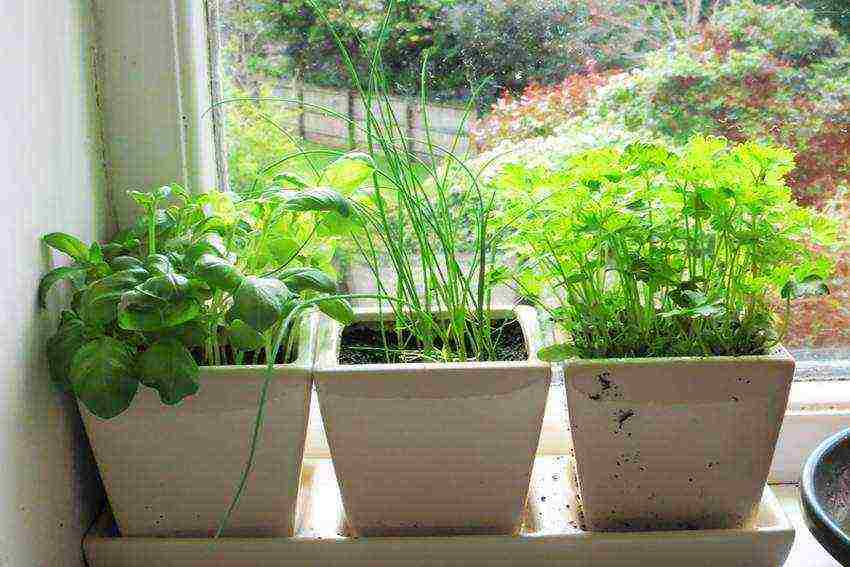
Juicy onion on the windowsill
It is extremely easy to grow onions on a windowsill. Experienced gardeners do this in two ways:
- traditionally in the ground;
- by hydroponics.
Owners of small window sills, planting bulbs in the ground, can use the space wisely by arranging vertical beds. To do this, take an empty plastic water bottle and cut holes in it in a circle. Next, you need to pour the earth into the bottle in layers and lay out the bulbs in rows so that their heads stick out from the holes made. If the earth in such a structure is replaced mineral wool, then the beds will turn from traditional to hydroponic. When working with mineral wool, do not forget about rubber gloves, which will help protect your hands during planting.

How to grow green onions on a windowsill. Photo
How to choose a bow on the windowsill
When starting to plant, it is necessary to carefully select the planting material. Bulbs should be firm, round, with shiny husks and no signs of decay. Their root bowl should be well developed, it is better to give preference to bulbs that have begun to germinate.

If no sprouted bulbs can be found, experts recommend making a neat cut at the top of the bulb parallel to the root bowl. Before planting in the ground, the bulb can be soaked briefly in water.
Care rules
Growing onions on a windowsill requires knowing some little secrets. Onions release green feathers well when temperature 18 to 20 degrees above zero. Raising the temperature to 24 degrees will speed up this process, and if it reaches a level of 30 degrees, the growth of greenery will stop.
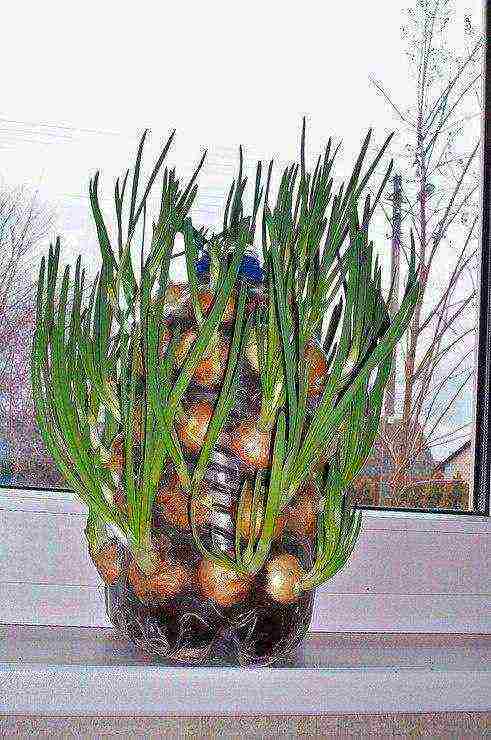
Growing onions on a windowsill for greens. Photo
With the cultivation method using hydroponicsWhen the bulbs are in the water, care must be taken to prevent them from starting to rot. To do this, you can raise the body of the bulb above the liquid using a cardboard or plastic circle with a hole in the center. In addition, to prevent the development of a putrefactive process, a 4% solution can be periodically added to the water. hydrogen peroxide or slightly pink solution manganese.
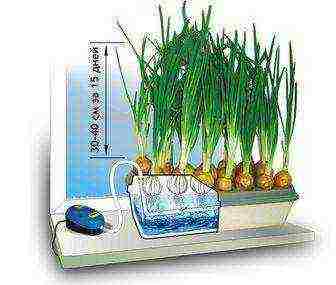
Contrary to popular belief, you should not put your bow on a window close to the light immediately after planting. For the first 10 days, he should be in a dark, cool place. During this period, the formation of the root system takes place. In the following time, the bow gratefully receives a large amount of light. If there is not enough natural light, you can use backlightby building it from fluorescent lamps.
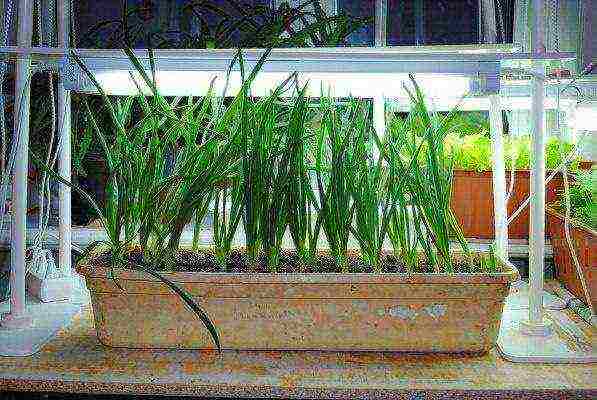
Juicy onions on greens on the windowsill. Photo
Green salad on the windowsill
Juicy green lettuce leaves are an indispensable addition to many vegetable and meat dishes. This plant is popular with lovers of tasty and healthy food. That is why many gardeners are wondering how to grow a salad on the windowsill of their apartment. Experts recommend using for this purpose such types of salad as Odessa, Rand Credo, Lol Rossa.

Growing lettuce on the windowsill. Photo
You can grow this plant in a pot of soil throughout the year. The lettuce produces lush greens but quickly recedes by firing arrows. Having collected a crop once, the bush must be destroyed, and a new plant must be planted in its place.
Planting and grooming secrets
Before planting, lettuce seeds should be kept in a slightly pink solution for several hours. potassium permanganate... After that, they need to be planted half a centimeter in the ground. It is better to immediately use a large enough container, since the salad does not like transplanting. But what he really loves is a lot of light and moisture moisture. In conditions of excessive dryness and poor light, the leaves of the plant become weak and pale.The salad should not only be watered, but also generously sprayed. In winter, the plant needs lighting.

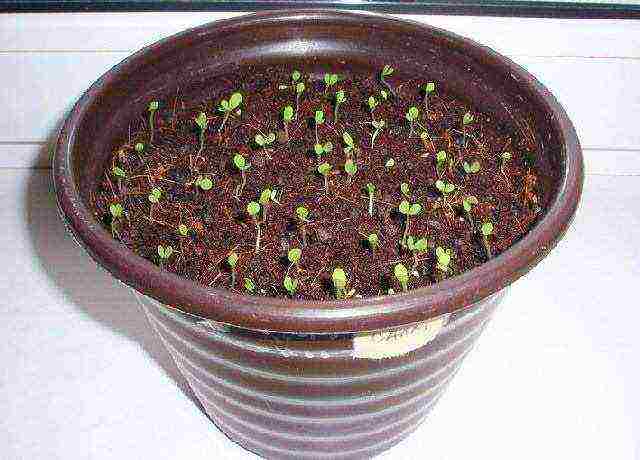

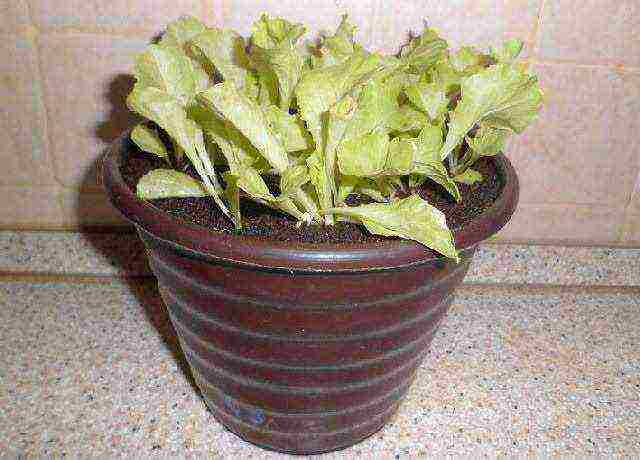

Having planted the seeds in the ground, the container must be closed with cellophane and not opened until the sprouts hatch. This happens, as a rule, for 3-4 days. The optimum temperature for plant growth is 18-20 degrees Celsius. The heat has a negative effect on the harvest, as it accelerates the release of arrows by the plant.
Parsley on the windowsill. Growing
It is hard to imagine what plant could compete with parsley in popularity. Almost not a single dish of Russian cuisine can do without this greenery. Knowing how to grow parsley on a windowsill, you can have fresh twigs of this useful plant on the table all year round.

Parsley on greens on the windowsill. Photo
How to plant correctly
Growing parsley at home is not difficult. This plant is very grateful and very picky. You can plant it:
- seeds in spring;
- root crops throughout the year.
Planting parsley with root vegetables
The roots of the plant should be planted in a container at a distance of at least a centimeter from each other. In this case, they need to be covered with earth so that the tops stick out on the surface. Drainage with such a fit, it is not necessary to use. The earth needs to be crushed well and abundantly to water.
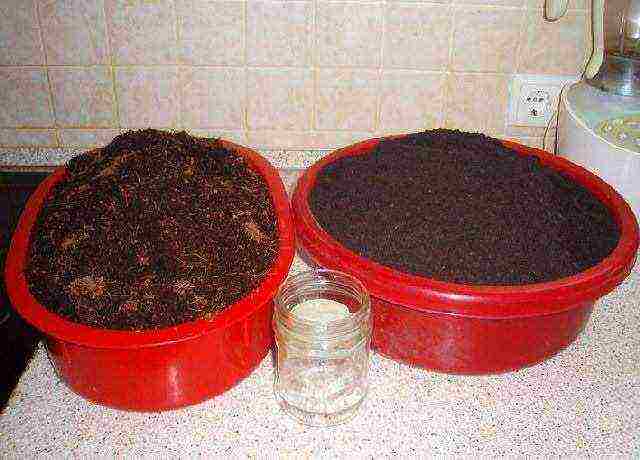


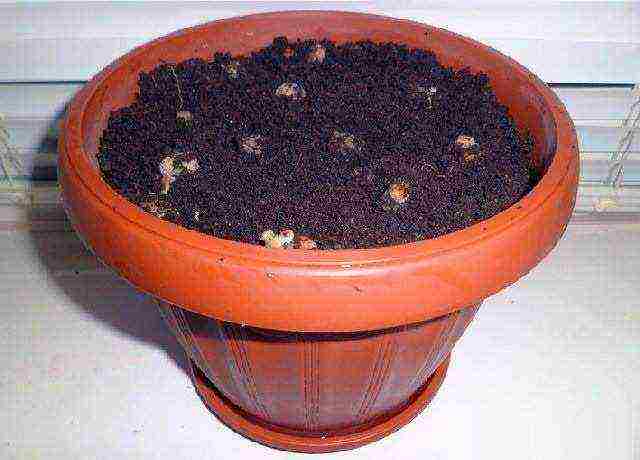
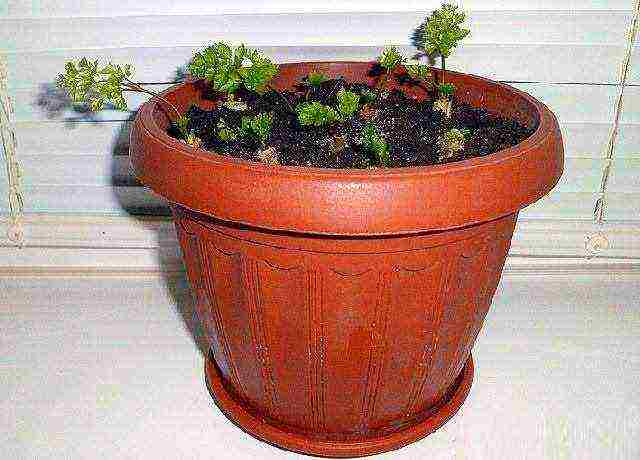

Parsley on the windowsill. Photo
Green shoots will appear within a couple of days after planting. From this point on, the plant must be provided with sufficient light. The first crop can be harvested in about two weeks. Experts recommend periodically rotating the container with the plant around its axis so that the growing bush forms symmetrically.
Planting parsley seeds
Unlike cultivation using root crops, seeds will germinate and give their first harvest no earlier than a month after planting. However, such a plant will delight its owner with lush greenery much longer.
Before planting, it is recommended to soak the seeds in an intense pink solution of manganese for 1-2 hours. It is imperative to put a drainage layer in the pot. There are two ways to plant seeds.
- With a dive... In this case, the seeds must be sown in small containers, and after the emergence of seedlings, choose the strongest young shoots and transplant into the main container for growing.
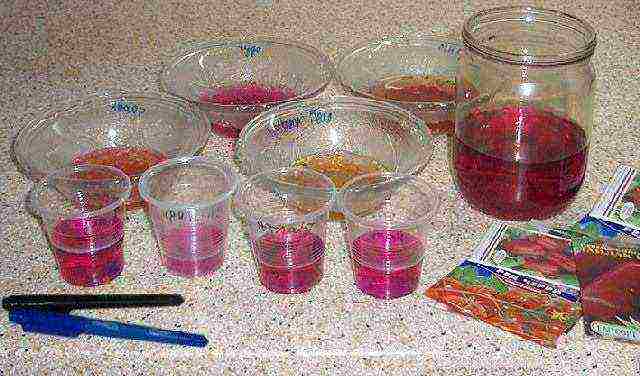
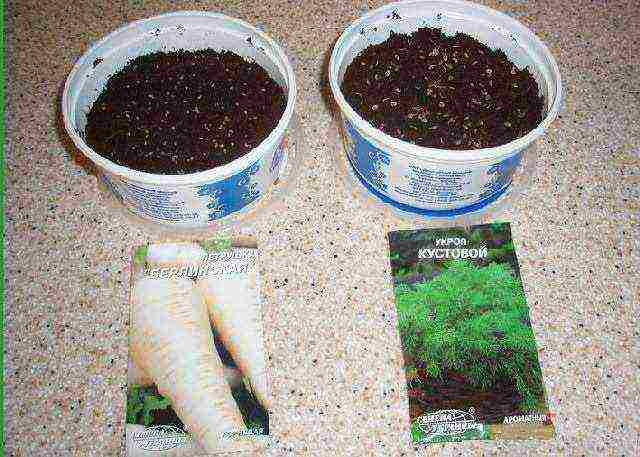
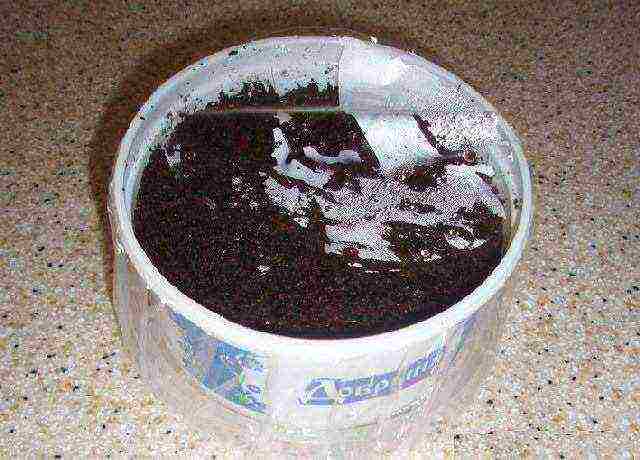
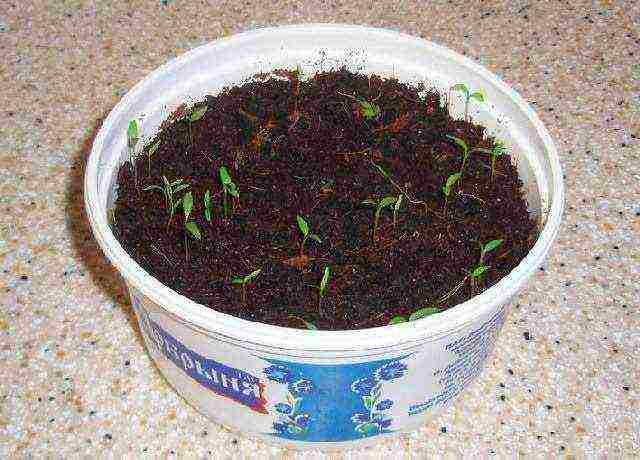
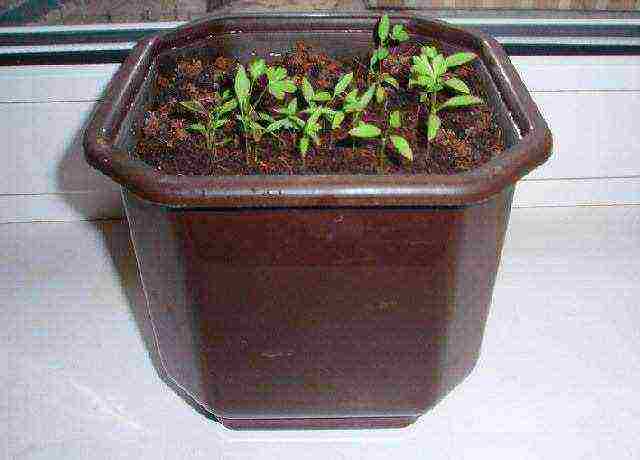
- Without picking... This method involves planting seeds directly into large containers. It is simpler, but does not provide the ability to sort the sprouts.
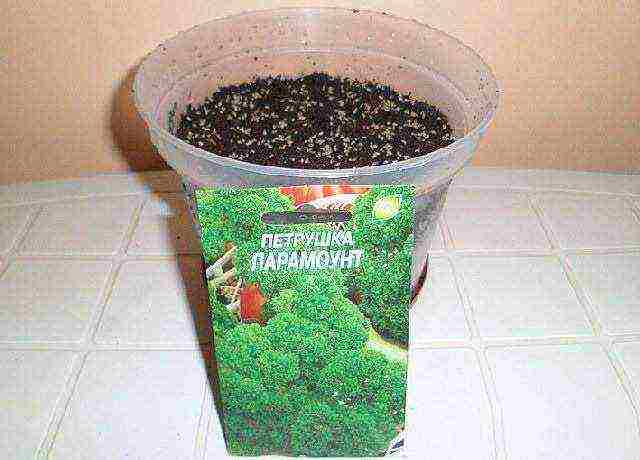

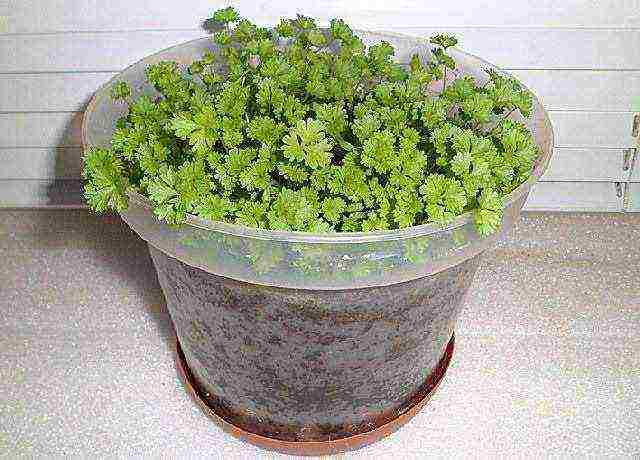
Caring for parsley on the windowsill
Optimal for growing greens temperature are 12-18 degrees Celsius, but parsley easily tolerates and its significant drops to 5 degrees Celsius and even lower. The heat causes the plant to stretch upward and its leaves become lighter in color.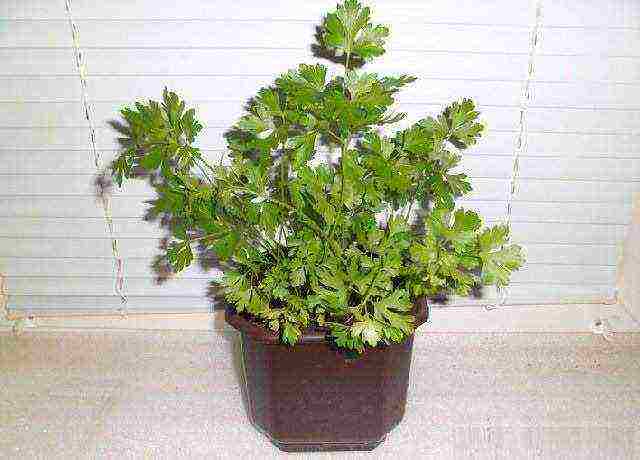
Growing parsley on the windowsill. Photo
Parsley, as a moisture-loving plant, needs generously to water water at room temperature. However, in winter, the abundance of watering should be reduced. To maintain a high yield of the bushes, it is recommended to fertilize them every 2-3 weeks. A teaspoon is suitable as a top dressing. agrolife or one cap Rostorma into two parts of water.
Dill on the windowsill
Growing dill on a windowsill can be done all year round. True, depending on the time of planting, it requires a different intensity of care. The least clap comes from greens grown between May and September. During this time of the year, dill gets enough light and warmth. But in winter, the delicate greens of this plant must be carefully illuminated and kept at a comfortable temperature.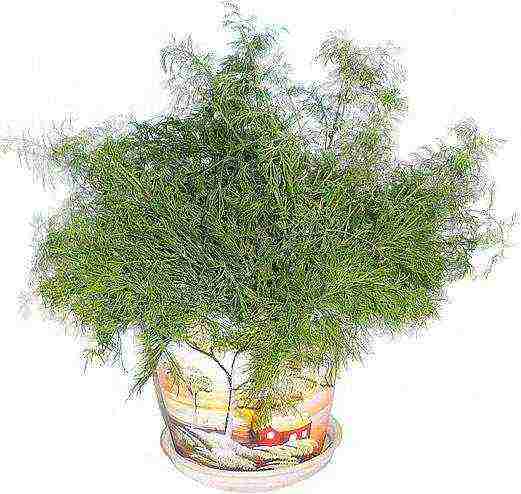
Growing dill on the windowsill. Photo
Planting dill seeds
Any gardener knows how to grow dill on a windowsill. Before planting, the seeds must be soaked in an intense pink solution of potassium permanganate to awaken vitality in them. Dill, like parsley, can be planted with dive and without it.It is imperative to pour a layer on the bottom of the container drainage... After planting the seeds in the ground, it is recommended to cover the container with a film to create a greenhouse effect and accelerate the emergence of seedlings.
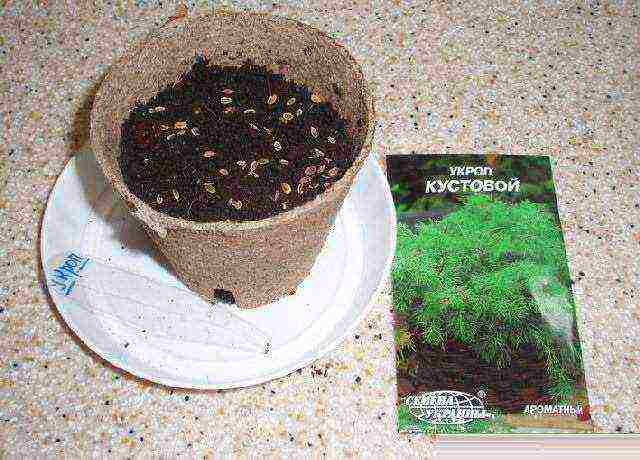

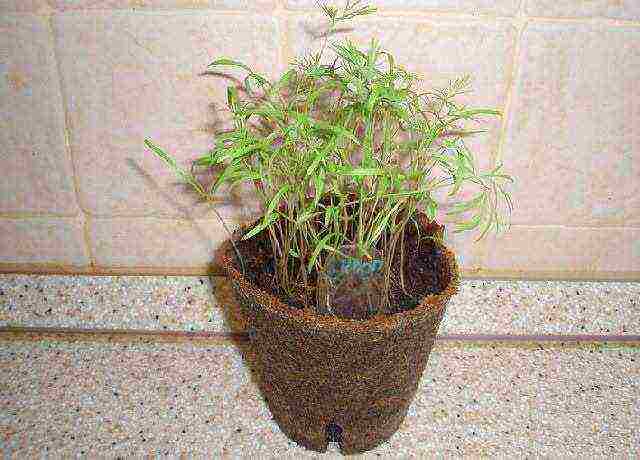
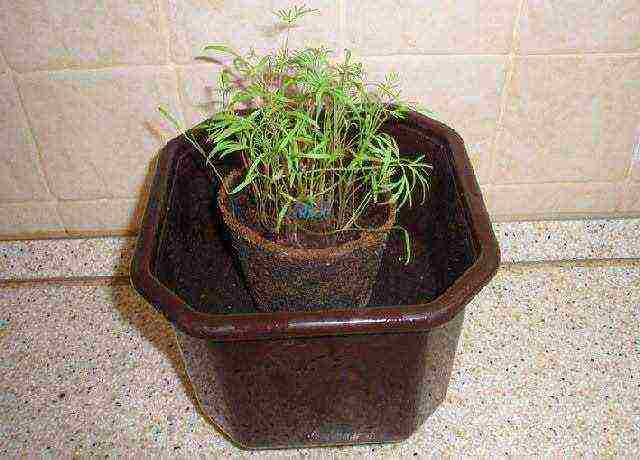


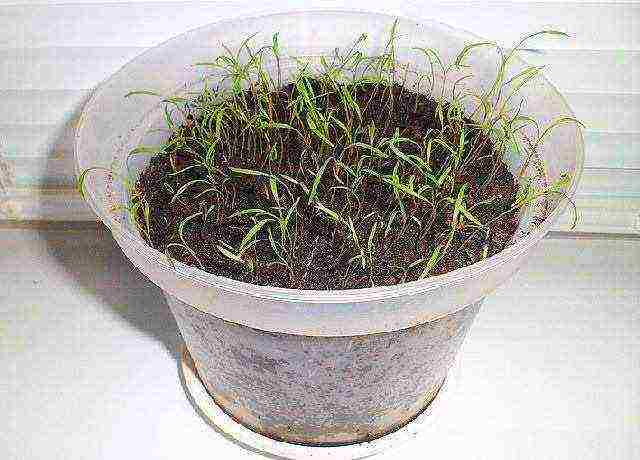


Growing greenery on the windowsill. Photo
Dill crops grow best when temperature 15-18 degrees Celsius, but they are not afraid of dropping the temperature to 8 degrees, so they grow well in winter on glazed balconies.
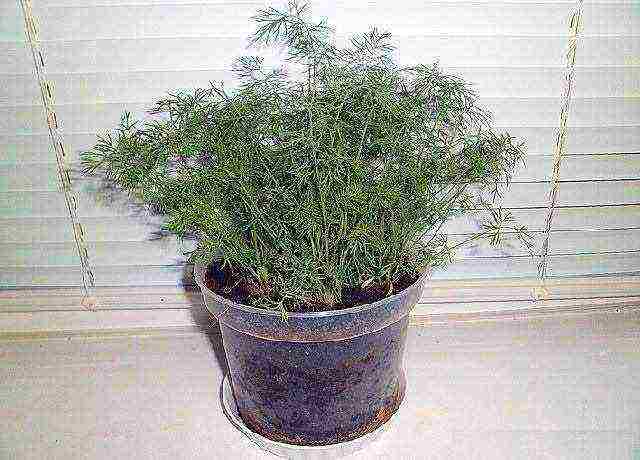
Dill loves moisture, therefore, it must be watered abundantly in summer, during periods of high temperatures. In winter, the intensity of watering should be reduced.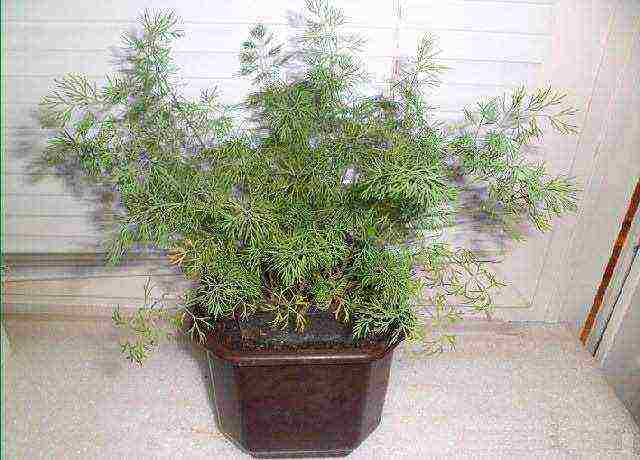
The first crop can be harvested one and a half months after planting.
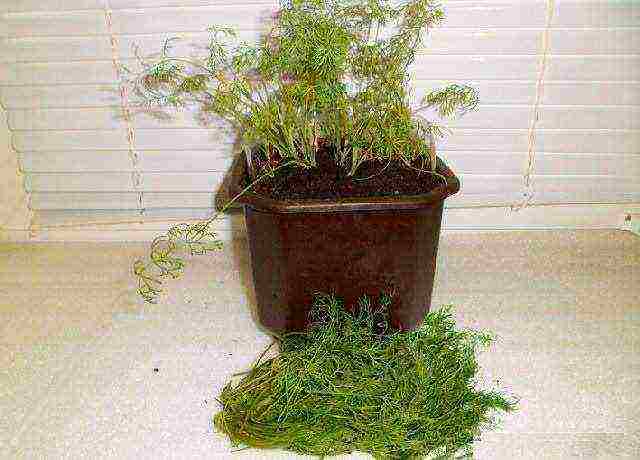
Sorrel on the windowsill
Growing sorrel at home is not only easy, but also very useful, since this plant actively releases oxygen. Sorrel is a very popular herb for housewives, so many of them know how to grow sorrel on a windowsill.
How to plant
- Seated sorrel with roots of three-year-old plants. To do this, the roots saved since autumn should be shortened by about 15 centimeters, and then planted in a prepared container. At the bottom of this container, you need to arrange a drainage pillow, then put a layer of sand and fill it with earth from above. Planting with roots is done in December. They need to be planted close to each other to prevent excessive growth of root rosettes.
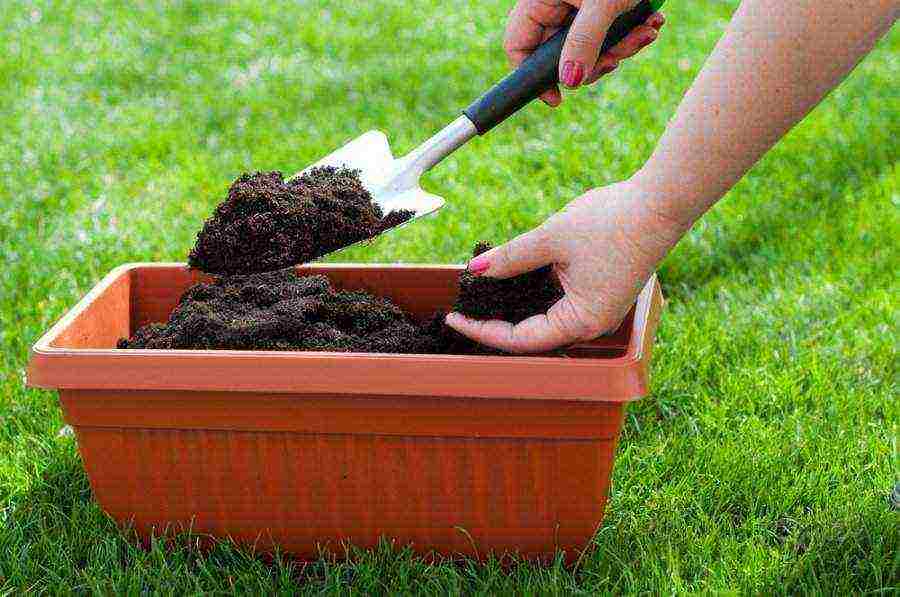


- Sorrel can be grown from seed... Before planting, they should be placed in a saucer with a little water and placed in a warm place. High-quality seeds will sprout in a couple of days, which need to be planted in beds with a distance of up to 6-7 centimeters between them.

How to care for sorrel on a windowsill
It is recommended to keep the plant for the first week at temperature + 10 degrees, then it can be increased to 20. Immediately after planting, the soil must be thoroughly moistened, as the greenery grows, watering should be done as needed.
As fertilizers when growing sorrel, you can use a decoction of onion peels, coffee grounds or dormant tea.
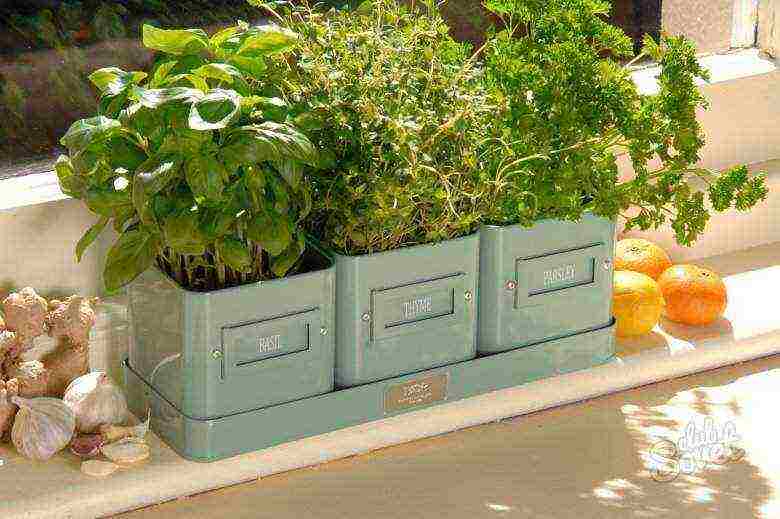
Greenery on the windowsill. Photo
In the early ripening stage, sorrel requires a lot of light. An adult plant easily tolerates darkened places. The first crop can be harvested in a month. Experienced gardeners claim that with good care from December to April, they collect three crops in a row.
Growing basil on a windowsill
For growing basil in pots on a windowsill, any varieties of this plant are great. The key to success is:
- sunny place;
- warmly;
- fertile soil;
- abundant watering;
- the presence of drainage.
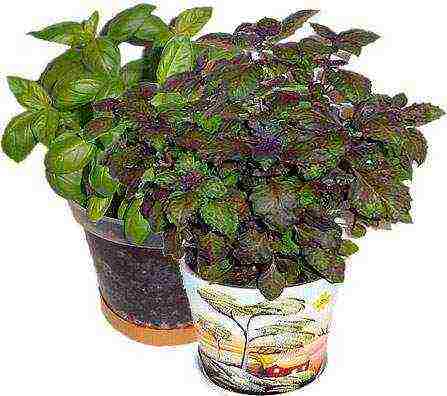
Growing greenery on the windowsill. Photo
Basil planting rules
Many housewives, deprived of personal plots, would like to know how to grow basil on the windowsill of their own apartment. This extremely beneficial plant reproduces in two ways:
- seeds;
- vegetatively, using cuttings.
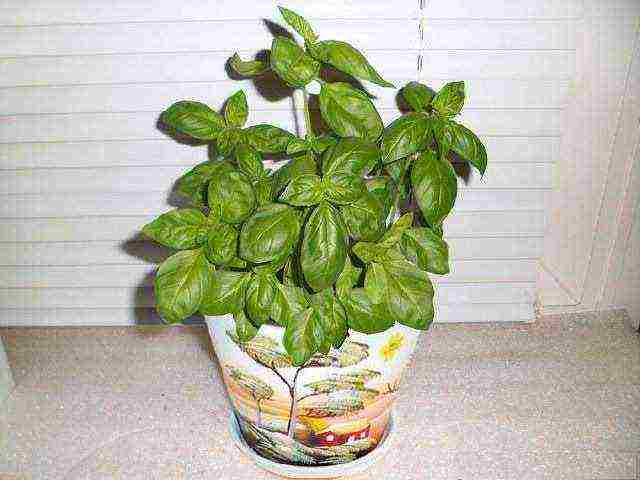
Basil planted seeds, will require more effort, but it will also delight the owner much longer than plants grown from cuttings.
To propagate basil vegetatively, you need to take a few of its branches, bought in a store or in the market, and put them in the water. After 7-10 days, they will give roots, after which the shoots can be planted in the ground. Two weeks after planting, the plant will be ready for consumption.

When planting with seeds, you should:
- Pre-soak the seeds in a manganese solution;

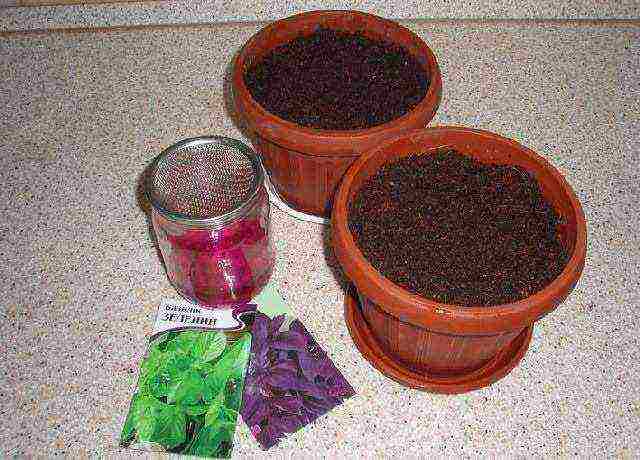
- plant to a depth of 1-2 centimeters in abundantly moistened soil;
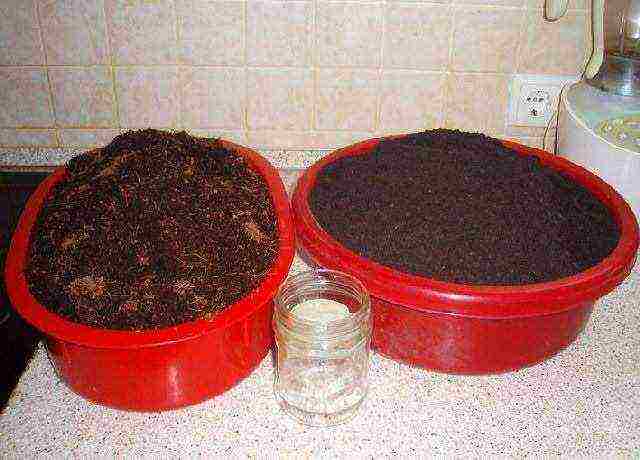
- provide a 3 cm drainage layer;

- keep the seeds planted in pots covered with foil until the first shoots appear.
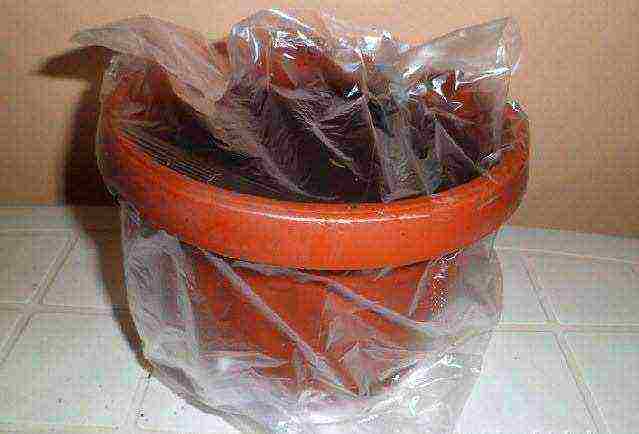
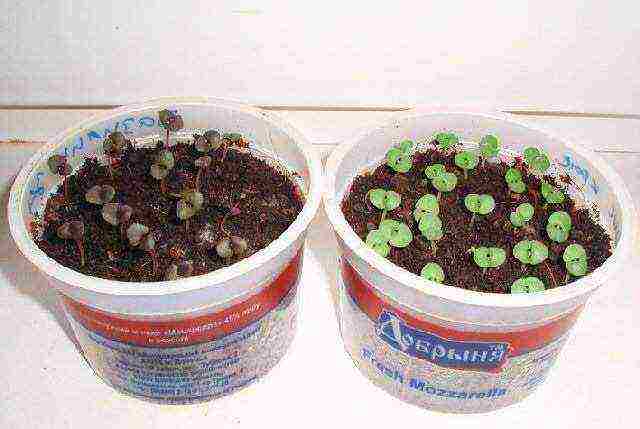
Care rules
- Basil is very sensitive to light, so you need to find the brightest spot for it.
- This plant feels good at a temperature of 20-25 degrees Celsius and can hardly tolerate any, even a slight, drop in temperature.
- Basil needs regular watering. In addition, he loves daily spraying with water.
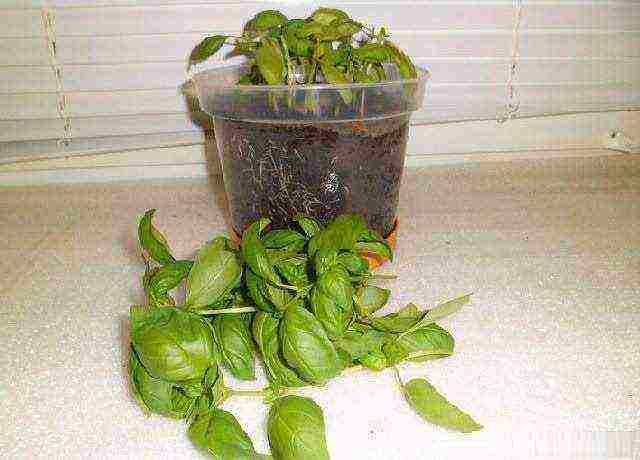
Growing greenery on the windowsill. Photo
When harvesting, you must first cut off the side shoots. In this case, the plant will grow vigorously.
Rosemary on the windowsill
Rosemary is loved by gardeners for its beauty and benefits. It is an exquisite spice, a delicate fragrant ornamental plant, as well as a raw material for the preparation of medicines.
Rosemary is not easy to grow on a windowsill, but the result is worth the effort. In order to successfully cope with this task, you need to follow the recommendations of experts explaining how to grow rosemary on a regular windowsill.
Despite the wide variety of rosemary varieties, it is possible to grow at home only fragrant rosemary.

Rosemary on the greenery on the windowsill. Photo
Landing conditions
- Growing rosemary is recommended in spacious pots, as this plant has an extensive root system.
- Planting rules require expanded clay cushion and slightly alkaline soils.
- Rosemary needs constant feeding. The soil should be fertilized every 14 days in summer and at least once in winter.
- The plant needs to provide a sufficient amount of light and a comfortable air temperature.
- The plant does not tolerate excessive moisture, so it is better to underfill than to fill it. With a lack of moisture, rosemary leaves turn yellow, and with an excess of moisture, the roots begin to rot.
Growing rosemary from seeds on a windowsill
Rosemary can be grown from seeds, but this is not easy to do because the seeds of this plant are not very germinable. Spring or autumn are suitable for planting seeds. Before planting, the seeds should be wrapped in wet gauze and leave for a couple of days. After that, they need to be placed in a well-moistened ground and covered with a film of polyethyleneby making several punctures in it.
You will have to wait for shoots from two to four weeks, regularly watering soil. If after a month the seedlings do not germinate, you need to repeat the planting procedure again. When the seedlings reach about 9 centimeters in height and acquire three leaves, a dive can be made. Throughout the growing period of the plant, it must be transplanted into larger and larger pots.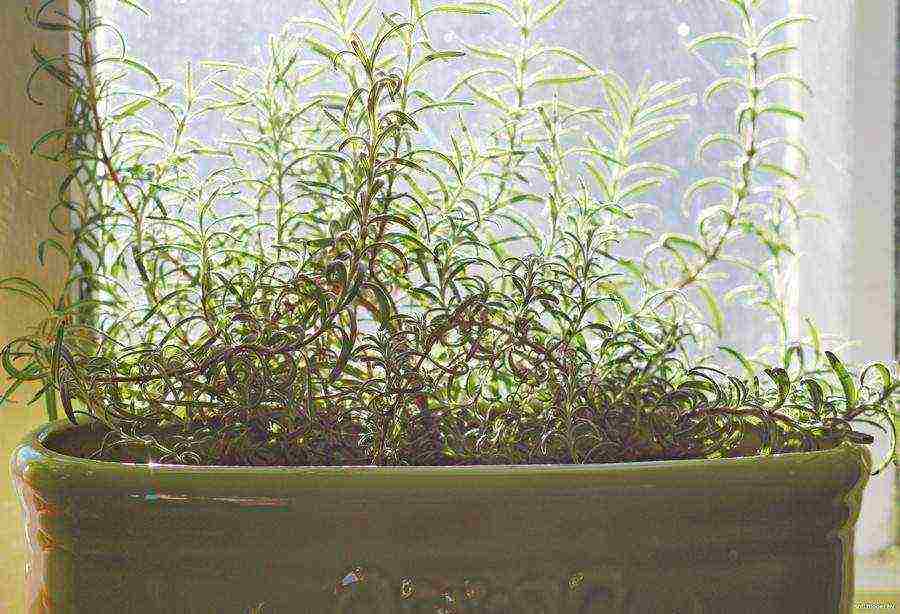
Propagation by cuttings
By cutting off an adult plant, you can get shoots for its further reproduction. In this case, you need to cut off the shoots from the top of the rosemary and make sure that they have a rustic stem structure.
Remove the lower leaves from the cuttings and place them in a container with a wet mixture of peat and sand, or simply in water. After root formation, the sprouts can be transplanted into ceramic flowerpots.
Rosemary flowers
In order for the plant to bloom, it must be placed in a colder environment. The air temperature can be about 10-15 degrees Celsius. During this period, the plant does not need to be watered or leaves to be cut off.
The flowers and the tops of the annuals can be used for food.
Spinach on the windowsill. Growing and caring
Growing spinach on a windowsill is easy. This annual plant is very popular with culinary specialists. Its juicy leaves are added to salads, first and second courses.
Many housewives know how to grow spinach on a windowsill. This plant is very unpretentious and lends itself well to cultivation throughout the year.

Growing greenery on the windowsill. Photo
Sowing spinach
Spinach is grown from seed... Before planting, they need to be placed overnight in a container of warm water to soak the hard shell, and then put in a solution potassium permanganate for a few hours.
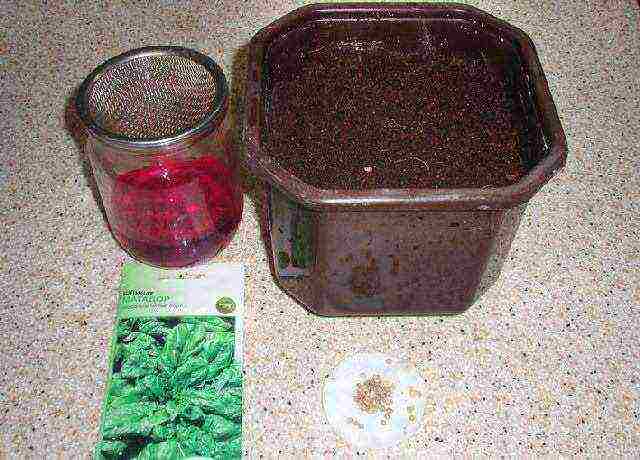
Spinach on the windowsill. Growing and caring
When planting in a pot, you need to fill a layer on its bottom expanded clayand then put a layer of earth. Seeds can be planted to a depth of one and a half centimeters.While waiting for the shoots to appear, the pot should be covered with cellophane.

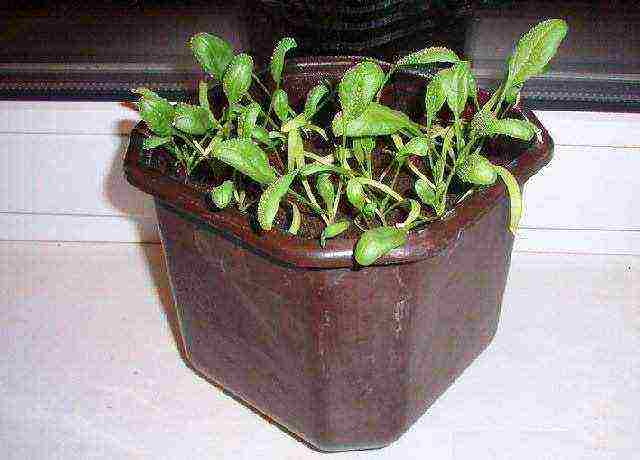
Features of caring for spinach on the windowsill
- The spinach needs to be watered frequently and abundantly, since dry soil tends to throw out the shooter, after which the plant is no longer suitable for food.
- The plant prefers a temperature of 15-18 degrees Celsius, but calmly tolerates its lowering to 8.
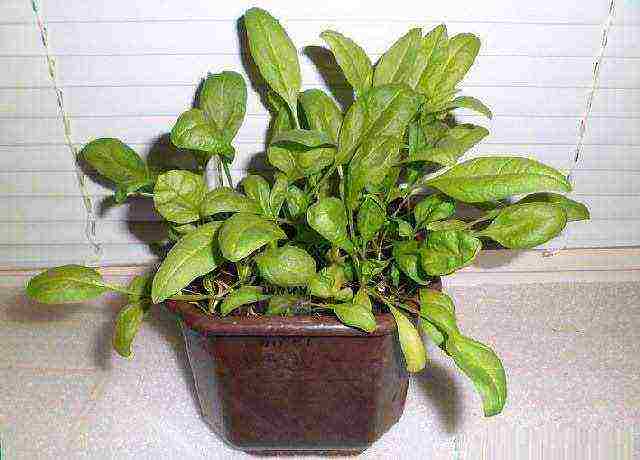
The first greens after sowing can be harvested around the end of 3 or 4 weeks. But after a month and a half, the plant becomes unusable.

Growing greenery in pots on a windowsill is a very rewarding and fun process. Having mastered it once, you can decorate your diet with various green spices for many years.

It is convenient when there is always fresh greens at hand - the prepared dishes with it become more aromatic and tastier, so you can often find dill on the windowsill among prudent housewives. At home, this unpretentious plant feels no worse than in the garden, and with good care it gives a lot of lush greenery.
Choosing the right dill variety is the first step to a good harvest
It would seem that even inexperienced gardeners should not have any questions about how to grow dill at home: after all, you just need to sow seeds in a pot with soil and do not forget to water the seedlings, removing the weeds. But in fact, instead of the expected dense thickets of fragrant dill, thin pale blades of grass, practically without aroma, sway sadly in the pot. What's the secret? How to plant dill at home and get greens that are no worse than those that are sold on the market all year round?
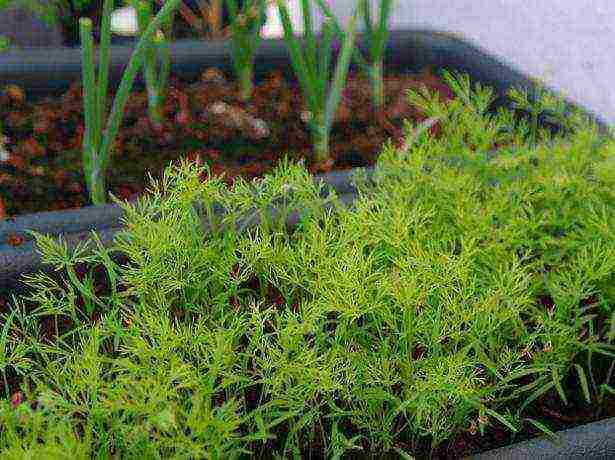
For the purpose of growing dill at home, gardeners most often choose the early ripening variety Gribovsky
To grow dill at home, you will need:
- seeds of a fruitful unpretentious variety of dill;
- soil for indoor plants;
- fertile garden land;
- suitable containers (pots, containers);
- fluorescent lamps;
- complex mineral fertilizers.
Video about growing aromatic dill
For the purpose of growing dill at home, gardeners most often choose the early ripening variety Gribovsky. This variety of dill is not picky about care, resistant to temperature extremes, high yield and disease resistance. Its greenery has a strong aroma. In order for Gribovsky dill to produce a good harvest at home, it is enough to sow it in fertile soil and prevent weeds from appearing.
The following varieties are also suitable for growing on a windowsill: early-ripening Grenadier, mid-ripening Richelieu with bluish-green fragrant leaves, late-ripening Kibray with beautiful wide leaves. Gardeners are also cultivated at home and southern varieties, which have a more spicy taste, but are more finicky.
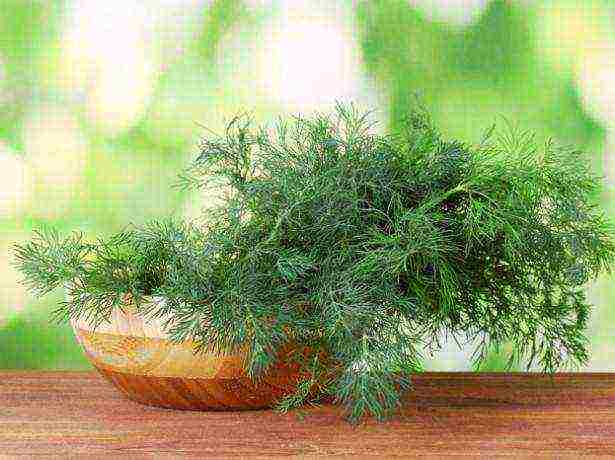
And late bush varieties do not have time to ripen in the beds over the summer.
Since there is no special variety of dill intended for growing on the windowsill, when choosing a seed, the main attention should be paid to the ripening time. It is important not to be mistaken here: although early varieties give green mass in a very short time, they quickly stretch into flower stalks and are worse leafy than late-ripening varieties. And late bush varieties (Gourmet, Salute, Russian size) do not have time to ripen in the beds over the summer, but they are great for growing at home. Such dill on the window forms dense, well-leafy bushes, from the axils of which new shoots are formed.
Instructions on how to grow dill on a windowsill
In the garden, dill can grow on almost any soil, but successful cultivation of dill at home is possible only in a fertile soil mixture, which must be prepared in advance. To do this, in the fall, you should prepare loose garden soil and mix it before sowing with purchased neutral soil for indoor plants.Select a container for crops of a sufficient size so that the dill is not cramped, and do not forget about the drainage layer at the bottom of the container.
Since dill seeds germinate for a long time due to the high oil content, they must be soaked for 20 hours before sowing in warm water through which oxygen is continuously passing (for example, using a compressor from an aquarium). Another option is to simply place the seeds in warm water for two days and change it to fresh water every six hours.
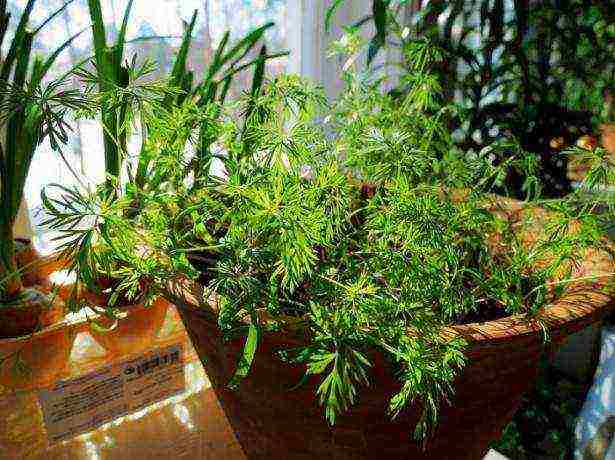
For best results, you can make grooves a centimeter deep in the ground, spill them with water and lay the prepared seeds on the bottom.
Seeds can be sown directly on the surface of the moistened soil, without grooves and pits, sprinkling with peat mixed with humus on top. Sufficient seeding rate - 0.3 g per 1 square decimeter of soil. For best results, you can make a centimeter deep groove in the ground, spill them with water and place the prepared seeds on the bottom. From above, dill seeds are sprinkled with dry earth from the edges of the grooves, so that a dense crust does not form on the soil surface, which prevents the emergence of seedlings. Cover the container with crops with cellophane and put it in a dark place with a temperature of about +20 degrees for a week.
After cutting, the stems and leaves of dill do not regrow: in order to continuously cut fresh greens, sow seeds on the vacating area of your micro-garden every three weeks.
Growing dill on the windowsill - the secrets of success
Growing dill at home, first of all, you need to remember that this plant is very fond of light. Place the crops on a light windowsill, and in winter, provide additional lighting for the dill by installing fluorescent lamps at a height of 50 cm above the plants. On the windowsill, it is enough to turn on the lamps in the morning for about five hours, but if the boxes with dill are in the back of the room, the supplementary lighting should last at least fifteen hours.
Video about growing dill on a windowsill
Dill care rules at home:
- dill must be watered regularly, especially paying attention to watering during seed germination and when young shoots appear;
- once every two weeks, it is recommended to feed the plantings with complex mineral fertilizer;
- it is best to grow dill at a temperature of +18 degrees, but on a glazed balcony when the temperature drops to +8 degrees, the plants will feel quite comfortable;
- if the temperature in the room is higher than +20 degrees, you need to increase the illumination, otherwise the dill bushes will turn out to be elongated, sluggish and light;
- in the first week, as the shoots seem to appear, it is advisable to lower the temperature in the room at night by opening the window, or to carry out the crops to the glazed balcony so that the dill does not stretch out.
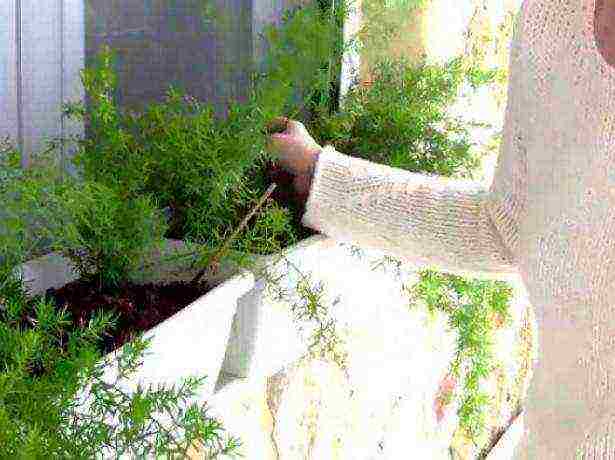
The dill needs to be watered regularly, especially paying attention to watering during seed germination
Growing at home can be more or less hassle depending on what time of year you plant the dill. The easiest way to grow dill on a window is from March to August, since planting without additional lighting forms lush greenery, provided there is fertile land and a light windowsill. In the autumn-winter period, without additional illumination, the plants will stretch and fall, which means that you will have to pay more attention to them, and the costs of growing will increase due to the consumed electricity.
Rate the article:
(16 votes, average: 4.1 out of 5)
